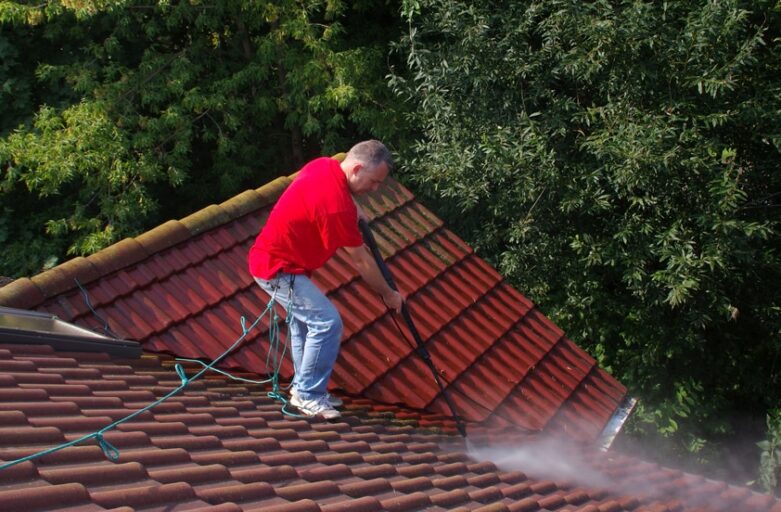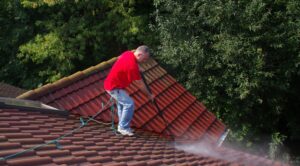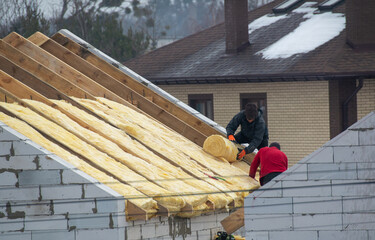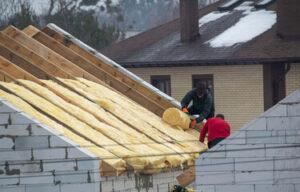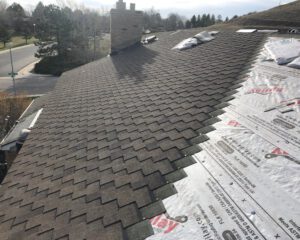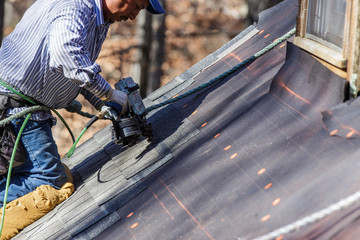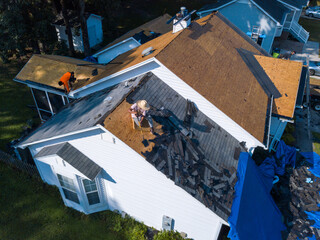SYBO Roofing and Construction of Punta Gorda LLC is a tradesperson specializing in roof construction. He is skilled in installing, repairing, and replacing shingles, tile, slate, and other roofing materials. He is also responsible for managing supplies and equipment.
Depending on the employer, he may interact with clients or customers and must possess good customer service skills. In addition, he must attend safety meetings and complete training regularly.

A roofer repairs or replaces roofs on homes, businesses, and other structures. This is a skilled trade and should only be performed by trained professionals. A roofer is often a crew member and works under a roofing contractor’s direction. A roofer should have extensive experience and training in roofing styles, materials, and techniques. The roofer’s job description should also emphasize safety and the ability to work under different weather conditions.
Some of the main duties of a roofer include tearing off old shingles, inspecting and repairing/replacing the decking, and installing new shingles and other coverings. They may also re-slate or tile a roof and install skylight windows. Roofers are also responsible for cleaning the area and removing all debris after completion of the project.
Other tasks may include assisting other construction contractors and laborers on site. They help with loading/unloading equipment, transporting and storing tools and roofing materials, and estimating costs for the completion of roofing jobs. Roofing workers must also be able to stand on ladders or scaffolding for long periods and have the physical strength to do so. They must also be comfortable working outdoors and in harsh weather conditions like wind, rain, and snow.
Lastly, roofers must have excellent communication and customer service skills to interact with clients and provide information on roofing methods, materials, and procedures. Since roofers are regularly on other people’s property, they should always be respectful and courteous.
The job responsibilities of a roofer should be clearly defined in the job description to attract the right candidates and deter unqualified ones. A well-written job responsibilities section is vital to the success of any recruitment campaign. It can be a key factor in determining whether a candidate will succeed in the role. This is especially important for jobs with high levels of competition. The following tips will help you create a great roofer job description that will attract the right applicants and keep the wrong ones at bay.
Roofers are the people who fix and maintain roofs on houses, schools, hospitals, and other buildings. They place shingles, replace lead sheeting and cladding, fit skylight windows, and do many other tasks. They spend most of their time above ground, so they need to be comfortable with heights. They also need to work well under pressure and in high-stress situations. They often work with tight deadlines and weather conditions, making the job even more challenging.
It is possible to become a roofer through on-the-job training. However, most Roofers are trained through apprenticeship programs. These programs typically last three years and combine on-the-job training with classroom instruction. In addition to learning roofing skills, apprentices are taught how to use tools and equipment and apply different roofing materials.
Most apprentices begin their careers by working as helpers for experienced roofers. They are typically paid a salary while they learn the trade. Once they demonstrate their skills and knowledge, they can move on to more complex tasks. Some Roofers may also complete an Associate’s degree program in construction management or a related subject. These programs will provide them with the theoretical knowledge of roofing and the hands-on experience they need to succeed.
Some Roofers choose to join a union right out of high school. This can allow them to become supervisors or other positions within their organization. In addition, they may earn more money by getting certifications.
Those interested in becoming Roofers should have a high school diploma or equivalent. They should also strongly desire to work outdoors and enjoy physical labor. In addition to being physically fit, Roofers need good hand-eye coordination and the ability to follow instructions. They should also be able to stand for long periods and climb up and down ladders. They should also be able to work in all weather conditions. Finally, they should be able to identify problems with a roof and troubleshoot them before they escalate into serious issues. A roofer is an individual who works on roofing structures. The person may be a licensed roofing contractor, an unlicensed general contractor who also does roofing, or they might work for a roofing company. Some roofers work on a contract basis, while others work full-time and have employees.
According to the Bureau of Labor Statistics (BLS), the number of jobs for this occupation is expected to increase by 2 percent between 2019 and 2029. The demand for roofers is likely higher in areas with frequent severe storms or more building construction.
The average salary of a roofer is $36,000, although it can be as high as $51,078 in some cities. The wages of a roofer can be affected by their level of education and experience, as well as the employer and location. To increase their salary, a roofer can consider changing employers or taking on additional education.
In addition to increasing their pay, a roofer can benefit from working in cities with higher average salaries. Have higher than average wages for Roofer jobs. The average salary in these cities is over 11% higher than the national average.
A career path is a series of job-related activities that lead to your short and long-term career goals. Some people follow a linear career path, while others change careers periodically to achieve their goals. In either case, a successful career as a Roofer requires the right qualifications and skills. Here are some tips for advancing your career in this field:
Roofers are skilled craftsmen who specialize in constructing, repairing, and maintaining roofs. They use various roofing materials to ensure buildings are structurally sound and weatherproof. Without roofers, buildings would be vulnerable to leaks and other environmental damage. Roofers may work on residential, commercial, or industrial structures.
Generally speaking, roofers are employed by construction companies. They work with a team of other construction professionals, including carpenters and electricians, to complete building projects. In addition to working on roofs, they may install skylights, gutter systems, and insulation. Depending on the type of job, they can also perform repairs on walls and other parts of the structure.
There are several different types of roofers, each with their specialties. Some focus on installing new roofs, while others work on existing ones. Some roofers work exclusively on residential homes, while others specialize in commercial or industrial buildings. Regardless of their specialty, all roofers must be adept at climbing and working on ladders. They must also be able to handle heavy materials and tools and navigate complex scaffolding systems.
The most common types of roofers are shingle roofers, flat roofers, and tile roofers. Shingle roofers are responsible for installing shingles, which are small, square pieces of material that are nailed to the top of the building. Flat roofers are experienced in working with low-sloped roofs, which are more common on commercial and some residential structures. Tile roofers are skilled in working with natural or synthetic slate, clay, or concrete tiles.
Those who wish to become roofers can pursue occupational training programs, apprenticeships, or college degrees in construction management. They can also learn the trade through on-the-job experience with a reputable contractor. Once qualified, they can apply for a blue-skill worker CSCS card to work on construction sites. While many roofers are self-employed, some work with specialized roofing companies offering comprehensive maintenance and repair services. These companies can be a good option for homeowners looking to repair or replace their roofs quickly and affordably.
